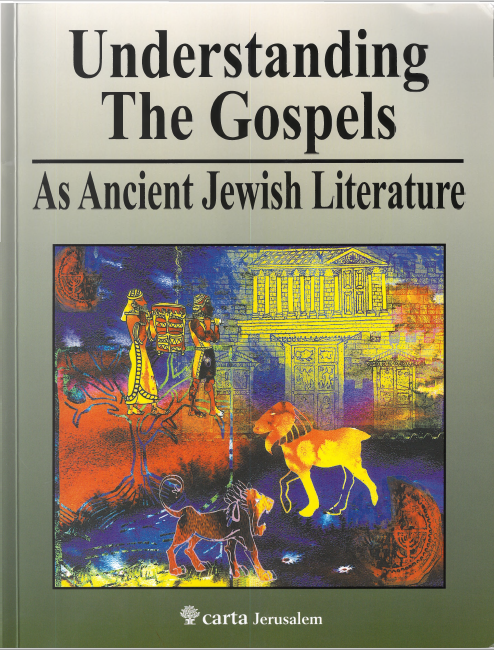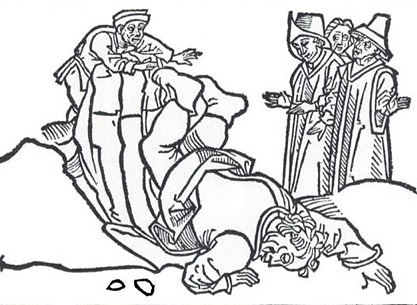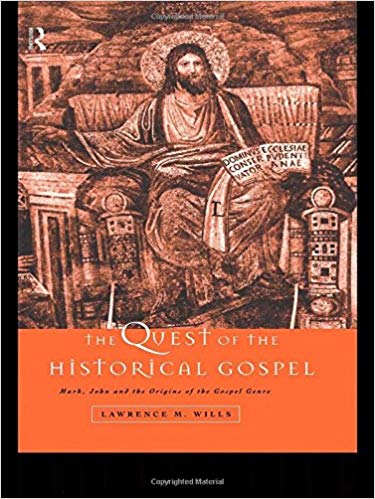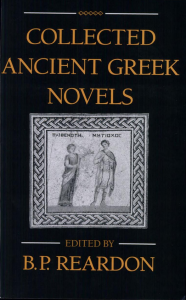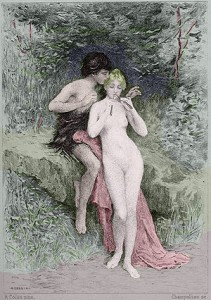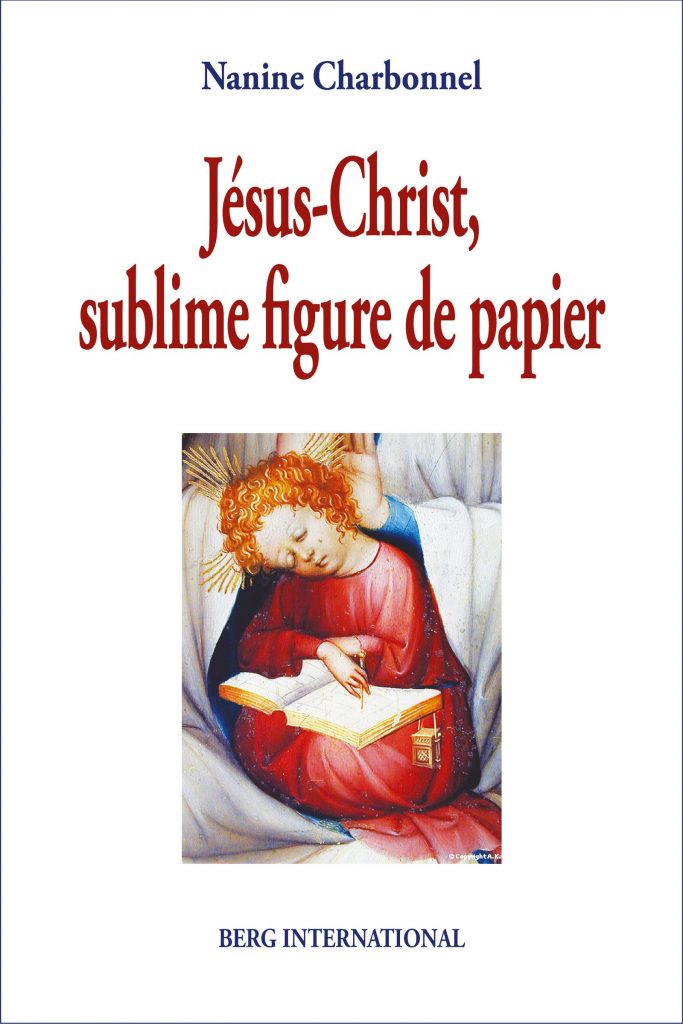I’m travelling again so am pulling out the occasional post I’ve had in store for such times. If circumstances do not permit some of my planned posts I’ll post another one of these.
It’s been a while since I addressed James McGrath’s critical responses to mythicism so I will try to make amends. Please, only courteous and civil responses will be acceptable in the comments. I bent over backwards to make the peace with James McGrath a few years ago and I would still like to keep that possibility open. I like to hope that he will respond to my posts in a reciprocal spirit.
About three months ago McGrath engaged in discussions on Bob Seidensticker’s Cross Examined blog and presented the following list to enable readers to get a grasp of his reasons for objecting to mythicism. He listed only the urls but I have added the titles, too.
I’ve been blogging and writing elsewhere about this [i.e. mythicism] for many years. Here are a few samples in case they are helpful.
- McGrath, James F. 2014a. “Mythicism and the Mainstream.” The Bible and Interpretation. March 2014. http://www.bibleinterp.com/articles/2014/03/mcg388024.shtml.
- ———. 2014b. “Did Jesus Die in Outer Space?” The Bible and Interpretation. October 2014. http://www.bibleinterp.com/articles/2014/10/mcg388028.shtml.
- ———. 2015. “Mythicism and the Making of Mark.” The Bible and Interpretation. August 2015. http://www.bibleinterp.com/articles/2015/08/mcg398026.shtml.
- McGrath, Religion Prof: The Blog of James F. 2011a. “Minimalism, Mythicism and Modernism.” Religion Prof: The Blog of James F. McGrath (blog). July 14, 2011. https://www.patheos.com/blogs/religionprof/2011/07/minimalism-mythicism-and-modernism.html.
- ———. 2011b. “Mythicism and Paul’s Claims to Supernatural Revelation.” Religion Prof: The Blog of James F. McGrath (blog). October 18, 2011. https://www.patheos.com/blogs/religionprof/2011/10/mythicism-and-pauls-claims-to-supernatural-revelation.html.
- ———. 2012. “Mythicism and James the Brother of the Lord (A Reply to Richard Carrier).” Religion Prof: The Blog of James F. McGrath (blog). March 25, 2012. https://www.patheos.com/blogs/religionprof/2012/03/mythicism-and-james-the-brother-of-the-lord-a-reply-to-richard-carrier.html.
- ———. 2013. “Joseph Hoffmann on Mythicism, Skepticism, and Historical Reasoning.” Religion Prof: The Blog of James F. McGrath (blog). January 31, 2013. https://www.patheos.com/blogs/religionprof/2013/01/joseph-hoffmann-on-mythicism-skepticism-and-historical-reasoning.html.
- ———. 2014a. “Brief Review of Maurice Casey’s New Book on Mythicism.” Religion Prof: The Blog of James F. McGrath (blog). February 14, 2014. https://www.patheos.com/blogs/religionprof/2014/02/brief-review-of-maurice-caseys-new-book-on-mythicism.html.
- ———. 2014b. “How You Can Tell Maurice Casey’s Book About Mythicism Is Good.” Religion Prof: The Blog of James F. McGrath (blog). March 4, 2014. https://www.patheos.com/blogs/religionprof/2014/03/how-you-can-tell-maurice-caseys-book-about-mythicism-is-good.html.
- ———. 2014c. “Richard Carrier’s Decisive Argument Against Mythicism?” Religion Prof: The Blog of James F. McGrath (blog). March 5, 2014. https://www.patheos.com/blogs/religionprof/2014/03/richard-carriers-decisive-argument-against-mythicism.html.
- ———. 2014d. “Does Christianity Disprove Mythicism?” Religion Prof: The Blog of James F. McGrath (blog). September 6, 2014. https://www.patheos.com/blogs/religionprof/2014/09/does-christianity-disprove-mythicism.html.
- ———. 2014e. “Mythicism’s Missing Middle.” Religion Prof: The Blog of James F. McGrath (blog). September 24, 2014. https://www.patheos.com/blogs/religionprof/2014/09/mythicisms-missing-middle.html.
- ———. 2014f. “Mythicism’s Methodological Mess.” Religion Prof: The Blog of James F. McGrath (blog). October 21, 2014. https://www.patheos.com/blogs/religionprof/2014/10/mythicisms-methodological-mess.html.
- ———. 2014g. “Mythicism and the Teacher of Righteousness.” Religion Prof: The Blog of James F. McGrath (blog). November 3, 2014. https://www.patheos.com/blogs/religionprof/2014/11/mythicism-and-the-teacher-of-righteousness.html.
- ———. 2014h. “Mythicism Isn’t Skepticism.” Religion Prof: The Blog of James F. McGrath (blog). December 12, 2014. https://www.patheos.com/blogs/religionprof/2014/12/mythicism-isnt-skepticism.html.
- ———. 2015a. “Skepticism of Mythicism.” Religion Prof: The Blog of James F. McGrath (blog). March 23, 2015. https://www.patheos.com/blogs/religionprof/2015/03/skepticism-of-mythicism.html.
- ———. 2015b. “Five Reasons Why Mythicism Is Disappointing.” Religion Prof: The Blog of James F. McGrath (blog). December 15, 2015. https://www.patheos.com/blogs/religionprof/2015/12/five-reasons-why-mythicism-is-disappointing.html.
1. “Minimalism, Mythicism and Modernism”
I will address each one in chronological order. So we start with
- McGrath, Religion Prof: The Blog of James F. 2011a. “Minimalism, Mythicism and Modernism.” Religion Prof: The Blog of James F. McGrath (blog). July 14, 2011. https://www.patheos.com/blogs/religionprof/2011/07/minimalism-mythicism-and-modernism.html.
Here McGrath quotes a portion of an article (the second last sentence) by Ronald Hendel and claims its relevance not only for “minimalists/maximalists” but for “mythicists and other modernists”. Minimalists refers to scholars who question the historicity of “biblical Israel”, believing the archaeological evidence must always trump the literary, and that archaeologists working in Palestine have not found evidence for
- an exodus of Israelites from Egypt;
- an invasion of Canaan by Israelites from the wilderness;
- for a united kingdom of Israel and Judah under David and Solomon;
- parallel kingdoms of Israel and Judah existing side by side up until the Assyrian conquest of Samaria;
- monotheistic worship of Yahweh until after the Persians established the colony of Jehud.
Maximalists, on the other hand, are generally said to trust the Biblical narratives unless they have good reasons to doubt them, and that there was some sort of Exodus behind the biblical story, a united kingdom under David, and some sort of historical reality behind the biblical account.
McGrath also refers to “modernists” but I will leave aside that side of his criticism because I am not sure what the term covers or how it is relevant to “mythicism”. (Hendel refers without elaboration to a dichotomy of “post modernists / modernists” in the last sentence.) McGrath introduces Hendel’s words with:
The idea that we are either going to precisely reconstruct the past, or conversely decisively disprove traditional views about it, without room for doubt or error, reflect the approach of a bygone era.
A very bygone era, indeed. I don’t know when modern historical studies have ever claimed to be able to establish “precise reconstructions …. without room for doubt or error”. Even our “father of modern history”, Leopold von Ranke, said that the most he hoped to be able to “reconstruct” was how a time and event “essentially was” — not how it was precisely and infallibly in all respects. I would be interested to know the specific scholars McGrath has in mind.
At this point I question the relevance of this introduction for the minimalist/maximalist debate as much as for mythicists. I don’t think either maximalist Albright or minimalist Thompson would claim to offer readers a precise reconstruction of the past without room for doubt or error. Nor do I know of any mythicist who seriously engages with the academic works of biblical scholars (e.g. Brodie, Doherty, the early Wells, Price, Carrier . . . ) who makes dogmatic claims about precise reconstructions of the past. All, from my reading at least, appeal to the weight of probabilities. I am open to correction, of course, but preferably from James McGrath’s own reading of mythicists.
I will leap to the conclusion of McGrath’s post because it is there that he targets mythicism directly: Continue reading “Addressing James McGrath’s Arguments Against Mythicism — 1”

